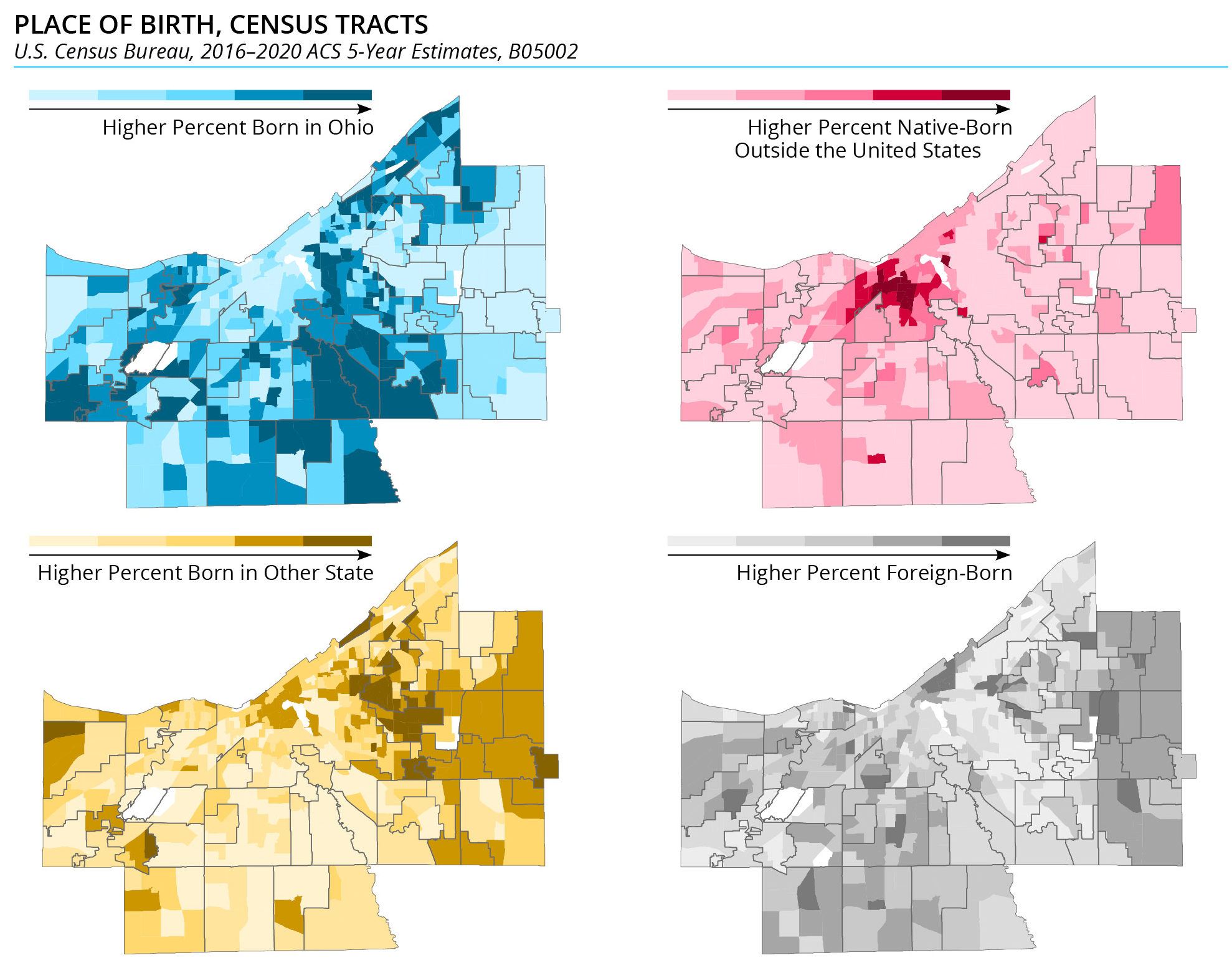
County Planning Releases Our Communities: The 2022 Data Book
Today the Cuyahoga County Planning Commission released Our Communities: The 2022 Data Book, the third in an annual series of data books providing insights into the communities that comprise Cuyahoga County.
The Data Book covers 40 indicators in five categories, with the indicators displayed as maps, charts, and lists by community. This resource can be used by local governments, community organizations, and others interested in learning more about our communities. It can also be used as a resource in preparing grant applications, understanding community changes, and identifying issues to address.
The five categories are:
- Demographics—Covers benchmarks of the population, including its size and its racial and age composition. It also covers communities’ households and their size.
- Economy—Presents indicators that measure the economic systems of our communities, including the location of job centers and the income, education and occupation of residents.
- Housing—Covers indicators that describe living situations, including the type of housing, whether it is owned or rented, and how much it costs to live in communities.
- Land Use—Describes generalized land use in communities, tree canopy coverage and change, and the availability of parkland and vacant land.
- Transportation—Measures transportation networks, how we get to work, and the availability of vehicles and active transportation facilities for residents.
“In this third iteration of the Data Book, we have been intentional about the indicators we have included. We are providing data that our communities can understand and utilize to make decisions and plan for their future.” said Mary Cierebiej, AICP, Executive Director of the Planning Commission.
“We want the communities in Cuyahoga County to thrive! Having one centralized document with key indicators is a useful tool for community partners, so we are excited to publish it again this year.”
The 2022 Data Book contains one new indicator, Place of Birth, which illustrates patterns of domestic migration and international immigration. Other indicators were adjusted and adapted to incorporate new data sources and improve methodologies. Almost all of the indicators in this edition were refreshed with updated figures.
Information in the Data Book comes from a variety of sources, including data from the U.S. Census Bureau’s 2020 Census, 5-Year American Community Survey, and Longitudinal Employer-Household Dynamics; the Northeast Ohio Metropolitan Data Resource; and the Cuyahoga County Fiscal Office, among others.
The Data Book is available at countyplanning.us/ourcommunities.
